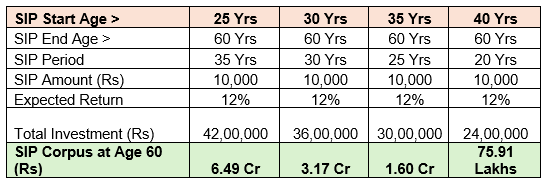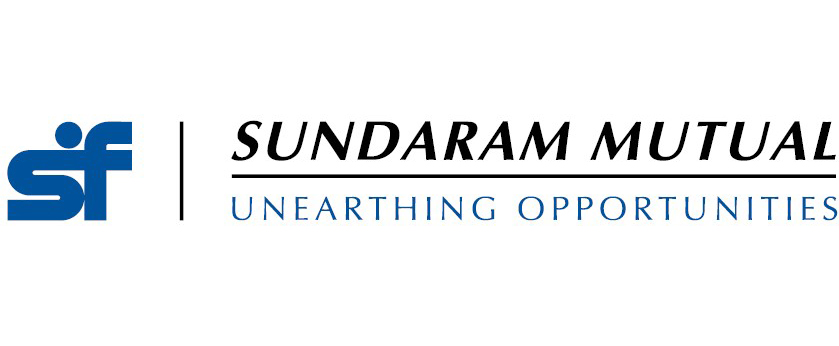How to achieve financial freedom through planning

Freedom could be of many different types. For example, we could be speaking of mental, physical or social freedom; but here we will focus on financial freedom, which often gets pushed to the back burner until we hit our retirement years, and we realize we are still prisoners of expenses that hit us in the face of almost dwindling cash flows.
So, what is financial freedom?
Financial freedom refers to the freedom that we get when we do not need to work for money. This is the stage when we may or may not engage ourselves in income generating activities like a job or business, and at the same time do not need to worry about our regular expenses. In other words, this is the stage when we are financially secure and not dependent on the income from our employment.
How is financial freedom achieved?
Well, the way to reach this destination is to make your money work harder as you work to make the money. Your target is to reach the sweet spot where your money starts working harder and generating the income for you to be liberated from the pressures of maintaining a job to finance your day-to-day life.
You may be wondering if at all this is possible. The simple answer is ‘yes’. It is possible to gain financial freedom with proper financial planning.
What is financial planning?
Financial planning refers to assessing your current financial situation and future goals and needs, and planning investments in order to achieve those goals and finance your future requirements.
The financial plan includes a strategic investment plan with an objective of generating cash flows for you in the form of capital appreciation or income generation (like dividends and interest etc.). The investment avenues could be any or a mix of mutual funds, stocks, bonds, fixed deposits, rental property, etc.
Do all investments contribute towards financial freedom?
To be financially independent, it is imperative that you have assets that generate cash flows to fund your recurring expenses as well as contingent expenses like medical bills. Your expenses will keep rising due to inflation. So, the cash-flows from your assets should also grow over time. Hence these investments should also generate some extra income for you to reinvest, as you cannot let your assets shrink if you are to possess true financial freedom.
While investing, it should be noted that all types of investments do not generate cash flows. Things like buying a car or owning a house for residential property could be a part of your financial plan as they are goals to be achieved but they are not what ensure your financial freedom, as these items are for your convenience and will not generate any cash flows.
Suggested reading how to plan for your retirement?
How to draw up a financial plan and ensure its success?
Drawing up a financial plan requires a deep understanding of your own profile. There is no one size fits all where financial planning is concerned. The following steps will ensure that your financial plan is aligned to your requirements and is successful in providing you financial freedom.
- Goals: The first step to any action is the ‘why’ for the action. Simply put, this means that before taking any action, you must ask yourself why you are doing it. Similarly, before preparing a financial plan it is important for you to gauge why you need the plan. What is it you are trying to achieve? Your requirement may be completely different from your friend’s requirement. So, as a first step, identify your goals that align to your state of financial freedom. After goal identification, assign a monetary value to each of your goals which will tell you how much cash flow will be the ideal one for you.
- Risk assessment: The next step is to assess how much risk you can take for your investments. This stage is not for determining how much is your disposable income. Rather, at this stage you need to assess how much risk you can take with your investments, with an eye on your dependents and your financial commitments towards them. If you have a family including your dependent spouse, children and aging parents, it is obvious that you cannot take as much risk as someone who has a spouse who is working and is shouldering the financial responsibilities in the family. Assessing your risk appetite in this way will give an indication of what kind of investment instruments you can invest in. For example, equity investments are considered riskier than debt instruments.
- Investment window: Just like the assessment of how much risk you can take is important, you need to also figure out how much time it takes to become completely financially independent. This time may coincide with your retirement or an earlier date. You may plan your financial independence to travel the world or just be stress free from worries of a volatile career path. Determining how much time you have left to achieve the value of your goals will ensure that you will know how much you should invest to get tentatively close to your target cash flow from the assets.
- Budget: In order to save, you need to draw up a budget where you can segregate your expenses as ‘needs,’ ‘wants’ and ‘desires.’ Your wants and desires like a new car, a dine out or a vacation can be postponed or even foregone, while your needs like rent, grocery, maintenance, medical insurance cannot be. An understanding of these different expenses will let you decide on drawing a fine balance between the amount you need to spend and the amount you should invest by sacrificing a few of the things which fall under the category of ‘wants’ and ‘desires.’
- Invest, not save: Saving is not enough. Money saved in your savings account will just lie there idle. Investing the money, you saved as a result of your budget in point ‘4’. To make this money grow, you need to invest it in a mix of investment instruments aligned to your risk appetite and investment time horizon. Certain expenses like payments to be made as taxes could be reduced by planning investments into tax-saving instruments. Remember investments in equity mutual funds cannot be avoided as historically it has given the highest return. For example – A monthly SIP of Rs 10,000 in the last 20 years in BSE Sensex would have created a corpus of Rs 95.11 Lakhs against a total investment of Rs 24 Lakhs. SIP in BSE Sensex gave 12.29% XIRR return during the period (Source: Advisorkhoj Research as on Jan 24,2024).
- Start early and stay invested: The final step towards achieving your financial freedom is to ensure you start investing as early on in your life as possible and remain disciplined in your investments regardless of market ups or downs. For example: How much can a SIP of Rs 10,000 started at age 25, 30, 35 and 40 grow to when you are aged 60?

As you can see in the above chart wealth creation can be exponential if you start investing at an early age. You may also read did you know creating wealth is faster with the SIP Top up facility
In the end, remember that achieving your financial freedom is your own decision and is very much possible if you plan early and invest for a long enough period. Discuss the best options for investments based on your profile with your financial planner or mutual fund distributor.
Mutual Fund Investments are subject to market risk, read all scheme related documents carefully.
RECOMMENDED READS
LATEST ARTICLES
- Understanding the tax implications of your investments: Budget 2024
- Vacations and Mutual Fund SIPs
- How to use different ways of investing systematically in mutual funds
- All you wanted to know about Multi Cap and Flexi Cap Funds
- Did you know that creating wealth is faster with the SIP Top Up facility
Sundaram Asset Management Company is the investment manager to Sundaram Mutual Fund. Founded 1996, Sundaram Mutual is a fully owned subsidiary of one of India's oldest NBFCs - Sundaram Finance Limited.
Quick Links
- Interview - Mr. Dwijendra Srivastava - CIO - Fixed Income
- Interview - Mr. Sunil Subramaniam - CEO
- Sundaram Select Midcap Fund: Consistent outperformance makes it a big wealth creator
- Interview - Mr. Sunil Subramaniam - CEO
- Fund Manager Interview - Mr. Krishna Kumar - CIO - Equities
- Sundaram Rural India Fund: This thematic Mutual Fund aiming good long term returns
- Sundaram Equity Multiplier: Long term wealth creation potential
- Our Articles
- Our Website
- SIP one sheeter-Investor Education initiative
- Sundaram Asset Management Singapore
- Returns Calculator
- SEBI Investor Awareness Initiative
- Check your KYC Status
- KYC Forms & FAQs
- Recieve your PIN
- A note on NIGO
- FAQs on RGESS
- FAQs on Direct Plan
- Receive Updates
- Share your views
- Transmission Checklist
- Equity Application Form
- Fixed Income Application Form
- Transaction Slip
- Factsheet May - 2016
- MF Tax Reckoner 2015
Follow Sundaram MF
More About Sundaram MF
POST A QUERY




